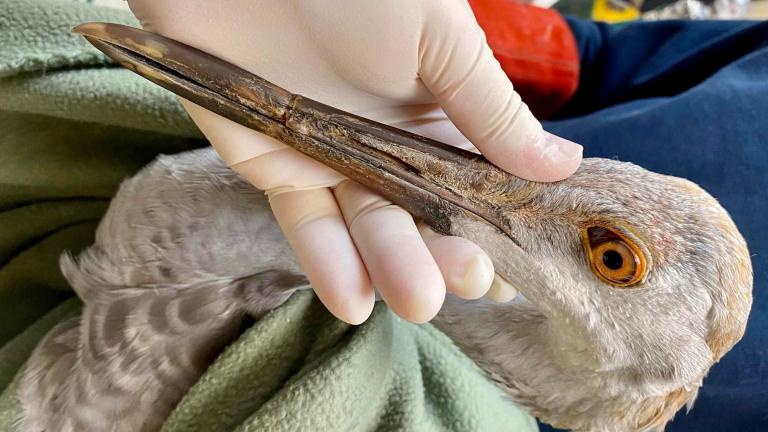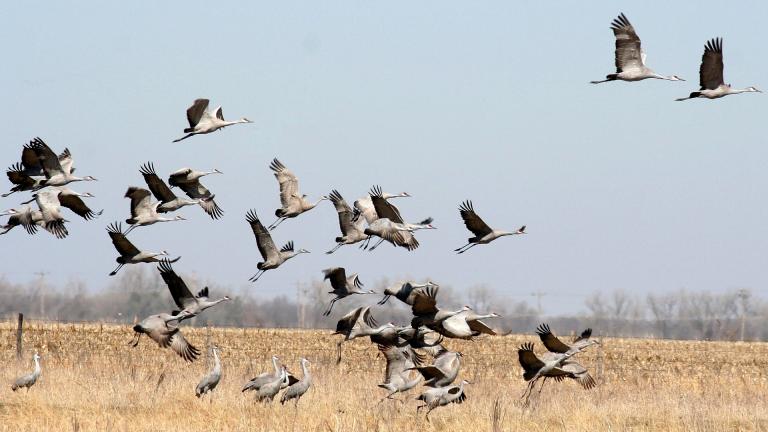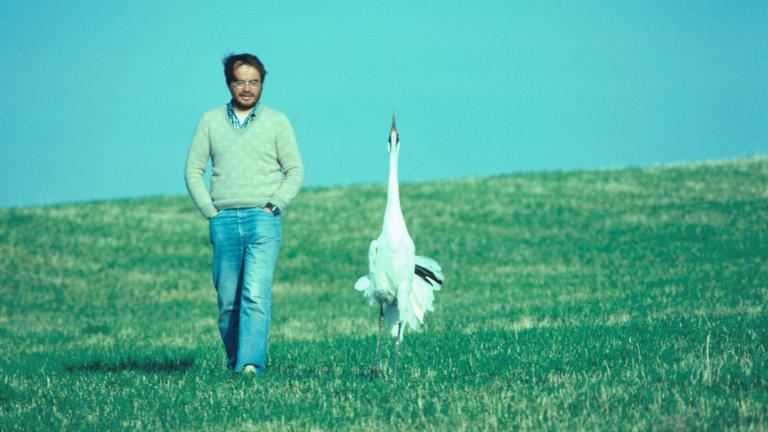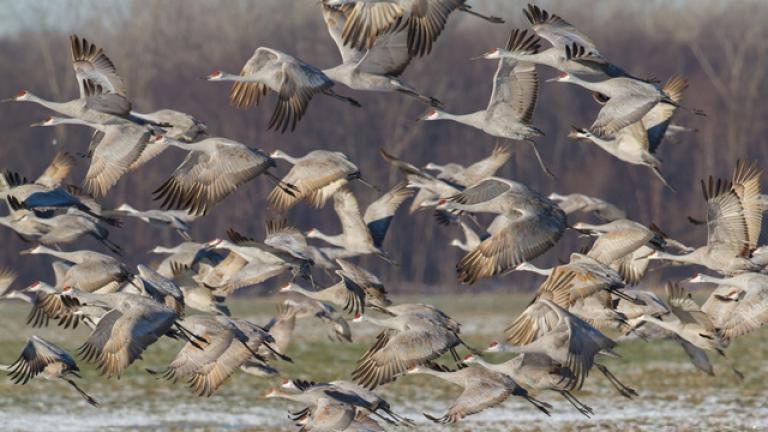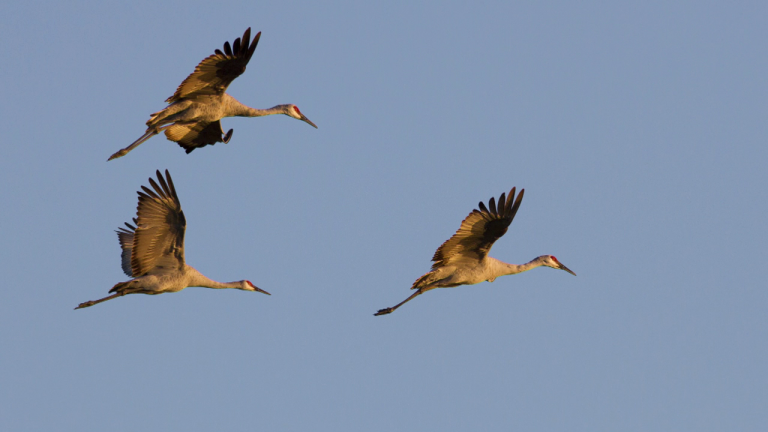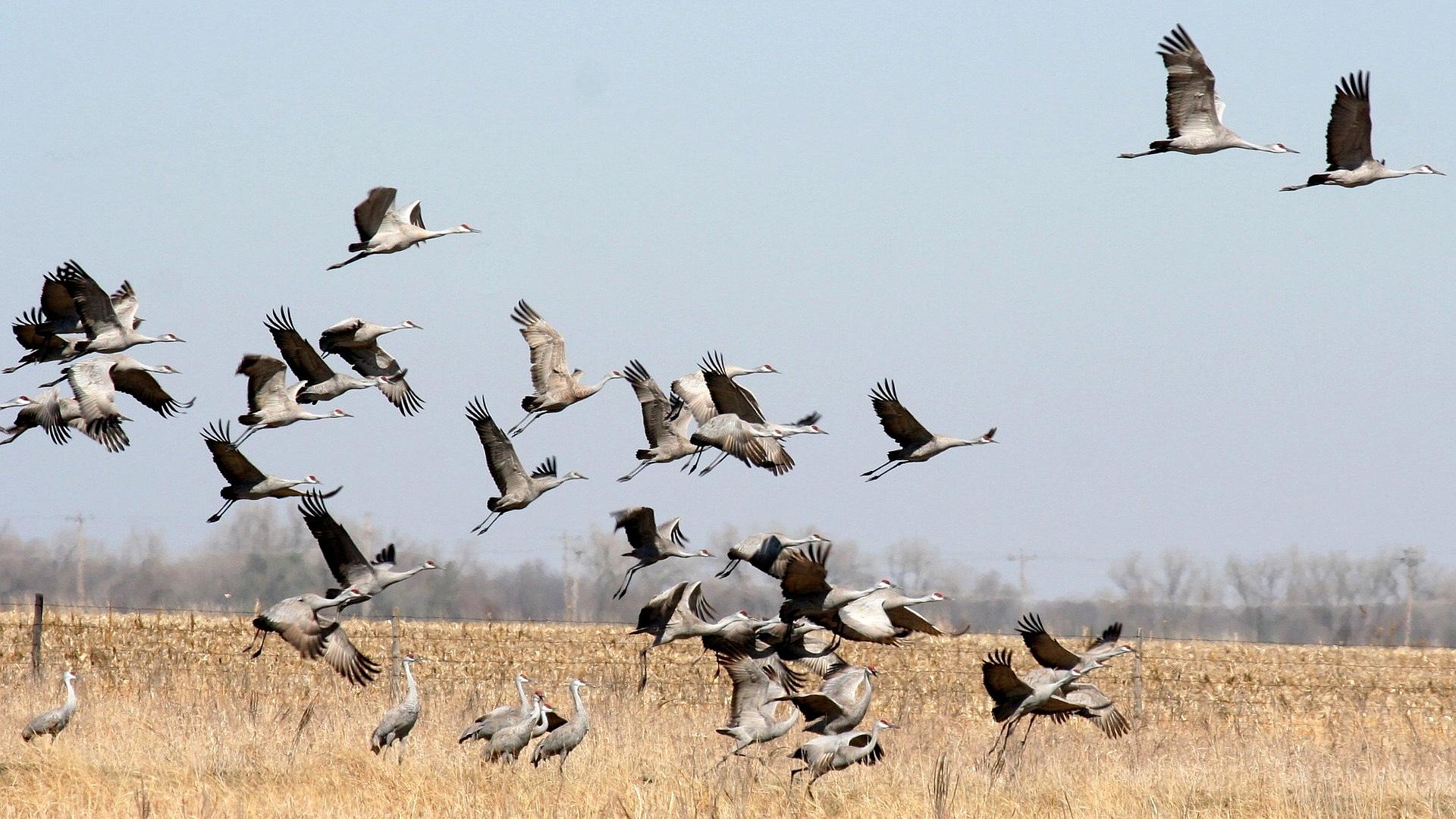 Sandhill cranes. (ladymacbeth / Pixabay)
Sandhill cranes. (ladymacbeth / Pixabay)
It's that time of year when a certain bird tends to dominate the conversation.
Yep, sandhill crane migration is reaching its peak.
Flocks — sometimes in the hundreds — have been seen and heard raucously passing over the Chicago region in recent days as they make their annual journey from their breeding grounds in the north to their winter home in Florida.
For those who've wondered whether there are more of the birds this year than in the past, the answer appears to be yes.
Tuesday's count at the Jasper-Pulaski Fish and Wildlife Area in Indiana — a key pit stop for the birds — tallied 31,975 sandhill cranes. That number tops 2021's high point of 28,652, and is closing in on the record of 34,629 counted in late November 2002.
Just a week ago, scarcely 7,000 of the birds were at Jasper-Pulaski, where the marsh wetlands offer habitat for the cranes to rest up and refuel. Nearly the entire eastern population of the sandhill crane depends on Jasper-Pulaski, which has been designated as a Globally Important Bird Area by the National Audubon Society.
The wildlife area is located near Knox, Ind., roughly an hour and a half southeast of Chicago. To witness this mass gathering of cranes, which has been likened to a festival for the birds, there's an observation deck at Jasper-Pulaski.
The best times of day to catch the cranes are sunrise and sunset, according to the Indiana Department of Natural Resources.
As sunrise, huge flocks rise up from nearby roosting marshes (closed to the public) to feed in surrounding fields and often stop in the open grassland areas of the refuge.
Alternatively, about an hour before sunset, cranes kite into the refuge near the observation area from all directions, where these super social birds hang out and catch up before returning to their roosting marshes at dusk.
One of two species of crane that makes their home in North America — whooping cranes are the other — sandhill cranes have existed in their present form for more than 2.5 million years. But by the mid-1930s, the population of the Midwest subspecies of the bird had been reduced to just two dozen nesting pairs, due to loss of habitat and overhunting.
Restoration of wetlands helped bring the population back from the brink, in one of the conservation movement's big wins.
Contact Patty Wetli: @pattywetli | (773) 509-5623 | [email protected]

